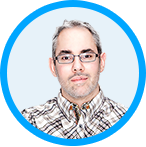Smartphones in the car: entertaining, powerful, and distracting - Talk Mobile

Presented by Blackberry
Talk Mobile Connected
Smartphones in the car: entertaining, powerful, and distracting
by Rene Ritchie, Daniel Rubino, Kevin Michaluk, Phil Nickinson

When it comes to expensive purchases, cars rank right up there. Not only are they designed to go fast, they're designed to do so in relative comfort and safety, while costing as little to do so as possible. Even with all of that design they're still complicated machines to operate. Yet, they can simultaneously be boring. What's engaging about coasting down an open stretch of highway? Nothing.
So we've devised ways to keep ourselves entertained, typically through passive entertainment from the likes of music or talk radio playing through the car's stereo. But recently the smartphone has stood to change the way we think about entertainment in the car, along with disrupting other things.
So how can we put mobile to work to provide the same level of entertainment in our cars as it does in our homes? Are the mapping services on our smartphones good enough to replace a dedicated GPS unit in the car? And is it even safe to be using these things while we drive?
Be an expert in 5 minutes
Get the latest news from Android Central, your trusted companion in the world of Android
Let's get the conversation started!




Automobiles
Articles navigation
- Infotainment
- Navigation
- Video: Derek Kessler
- Plugging-in
- Distraction
- Video: Georgia
- Conclusion
- Comments
- To top


Tunes in my car, care of my smartphone
By Phil Nickinson
Things are slowly getting better though, with the major manufacturers getting bigger screens and better design into our everyday rides. (And if you haven't seen the inside of a Tesla, Google it now. We'll wait.)
The idea is to keep you from having to touch your phone at all - or even take your eyes off the road.
But things are really getting interesting when it comes to our phones in our cars. First off, the idea is to keep you from having to touch your phone at all - or even take your eyes off the road. Phones themselves continue to improve in the hands-free department. Newer phones have "always-listening" capability so you don't have to touch them to trigger features like Siri or Google Now. Built-in Bluetooth is more affordable, and fast becoming standard on any new car.

Touch my Ford
There are two primary operating systems that for in-car infotainment: QNX, owned by BlackBerry and distributed with Harman, and Windows Embedded Automotive by Microsoft. The latter powers Ford's Sync system, which has grown to be the most deployed of auto manufacturer infotainment solutions.
The base level of Sync has a small LCD display with voice controls, while the step up (for a wad of cash, naturally) throws a large capacitive touchscreen in the center dash. The top-of-the-line MyFord Touch system combines the voice controls and touch screen with a pair of driver-customized screens inside the gauge cluster. Five years after debuting, Sync has been installed in more than 5 million Ford vehicles.
And now we're seeing infotainment systems leverage the apps on our phones. I took a tour of GM's facilities back in the summer of 2011 where they demonstrated exactly this. Other car manufacturers are rolling out the same sort of thing now, too.
You have Pandora radio on your phone. There's a corresponding Pandora app on your car's infotainment unit. The car connects via Bluetooth and uses your phone's data to pump the jams. But you use the car's controls to change songs -- even give the thumbs up or thumbs down to better customize your playlists. That's just one example. It's ever-expanding.
And just like your phone, you're able to add more apps to your car as they're released.
This is still in its infancy, and outside of a few high-end models, it's still going to be a bit slow to mature. But our kids are gonna love it.
01
What do you listen to while driving?
876 comments


Smartphones have obliterated the market for dedicated GPS
By Kevin Michaluk
There is no doubt about it, smartphones have all but killed the traditional standalone GPS unit. Dedicated units from companies like Garmin and TomTom used to be great, but they've fallen so far behind in technology and functionality that it's not even funny. Much as the stalwarts of smartphones pre-2007 failed to heed the iPhone as the game changer that it was, these companies dedicated exclusively to "personal navigation devices" failed to take the rise of the modern smartphone seriously, and now they're scrambling to catch up.
If you have a smartphone made in the past, oh, two or three years, you already have a superior navigation device in your hands than Garmin or TomTom have ever offered. Your smartphone has an infinitely superior screen, constant connectivity for always-up-to-date maps, web-enabled searches for points of interest based on more than just their location and name, live traffic updates and dynamic rerouting, superior voice controls, and so much more.
Your smartphone has a superior screen, connectivity, search capability, live updates, voice controls…
A dedicated GPS? It might be more precise, but 3-meter-accuracy vs. 1-meter-accuracy hardly matters in terms of vehicle navigation. And… well, that's just about it.
If smartphones have been attacking the traditional standalone GPS from above, they've also been under assault from below: the car itself. More and more cars are coming with options for built-in navigation systems, and while they might be plagued by the same problems as a dedicated GPS device (speed, connectivity, screen quality, etc), they have the benefit of being integrated into the car.

TomSquared
Founded in 1991, TomTom initially focused on specialized embedded software. In 1996, they moved into navigation, starting with mapping apps for early PDAs. TomTom released Navigator in 2002, a package of software, maps, and a GPS receiver card dock for Windows CE, followed in 2004 by a Palm OS version. That same year TomTom released their first dedicated navigation devices - which accounted for 60% of TomTom's revenue by the year's end.
TomTom jumped to iOS in 2009 with TomTom Mobile, and Android in 2012. Most smartphones today ship with free navigation software, so TomTom has moved into the services sector, supplying the mapping and traffic data to the likes of Apple, BlackBerry, Ford, Google, and Sony.
A built-in navigation system is there when you get the car, never needs plugged in, and typically ties in to the button controls on the car's steering wheel and voice commands. Hell high-end cars these days are putting screens inside the dash with the traditional dial speedometer (or replacing the entire gauge cluster with a single display) that puts navigation instructions where the driver should be looking anyway. Manufacturers are even getting smart enough to integrate their navigation systems with our smartphones, sometimes for something as simple as an app to feed a pre-picked destination to the car when you turn it on, or in the case of the upcoming iOS in the Car system from Apple that feeds a customized driving screen from an iPhone to the car's display. There will be some hold-outs, no doubt, but for the vast majority of us, the traditional dedicated GPS device is dead - it just hasn't realized it yet.

If there's anything smartphones have proven, it's how bad car navigation used to be.
Derek Kessler / Managing Editor, Mobile Nations
02
What do you use for in-car navigation?
876 comments


Connecting to the car - no wires required
By Rene Ritchie
Since the dawn of time, humanity has wanted to take all the music and messaging power of our mobile phones and cram them into our cars. Today, we're finally starting to get there. Gone are the days of AM/FM radios (mostly), tapes, and CDs for getting your automotive music fix. So too are the horrible adapters that masqueraded as tapes, running a wire to our devices. And FM transmitters? Ugh.
We owe some of that to the iPod. Yes, Apple's little "all your music in your pocket" product became so popular and ubiquitous that even the automotive industry took notice. So, the iPod connector program was born. At its height, manufacturers had USB connectivity options in the majority of vehicles and seamlessly integrated iPods into entertainment systems.

17 inches of Tesla
While most cars are lucky if they can boast an 8- or 10-inch touch screen, and often they're of a more frustrating and antiquated resistive type. Tesla, on the other hand, opted to put a massive portrait-oriented 17-inch capacitive touch screen in their flagship Model S electric sedan. This is paired with another display behind the steering wheel that completely replaces the traditional analog gauge cluster.
The center console display is powered by a Tegra processor from Nvidia. Controls all functions of the car, from opening windows and display diagnostic status, along with the standard climate controls and entertainment functions. The car even uses a 3G cellular connection to feed content to a full WebKit-powered web browser.
Cars themselves are getting smarter as well. QNX, the same core that now powers BlackBerry 10, is used in many cars to run their systems. Microsoft's Windows Embedded Automotive - built off the same core as Windows 8 and Windows Phone 8, of course - works behind the scenes to let products like Ford Sync work what feels like magic.
Apple has announced iOS in the Car, a feature that will let your iPhone or iPad take over the display in your vehicle much like Apple TV and AirPlay lets take over your HDTV. And you gotta figure embedded Android is going to make a huge play in the auto industry at some point as well.
Pair your phone with Bluetooth and your music and calls route effortlessly to the car, without even leaving your pocket.
Connecting has become much easier as well. Cables, thanks to the charging convenience, will always have their place, and USB connectors have become more commonplace in cars. Bluetooth has made wireless connections even more convenient. Pair your phone to your entertainment system and everything from your music to your calls routes effortlessly to the microphones and speakers in your car, without even leaving your pocket.
It's not perfect, at least not yet, but the smartphone makers and auto manufacturers are working hard to make it better.
Since we change phones far more frequently than we change cars, and generally the smartphone companies understand and implement everything from entertainment to communications far better than the car companies. Having everything in a little brain that goes with us everywhere is a much better solution that locking everything to the dashboard of a car we leave behind every time we step out.
Now excuse me as I pair up and tear out...
Talk Mobile Survey: The state of mobile connectivity


Visual, manual, and cognitive distracted driving
By Daniel Rubino
If you've been driving for even just a few years you're probably not thinking about everything that goes into it. A lot of driving becomes almost autopilot. Hurtling down the highway at 70 mph is a lot of work for the driver, even if a lot of it isn't done consciously.
You've got to keep the car in your lane, watch the cars in front of you and to your sides, monitor your speed, where you're turning next, and a hundred other things while dealing with your passengers, the stereo, other drivers, and whatever's happening on the side of the road. Failure to pay attention can and is proven on daily to be deadly.
Now throw a smartphone into the mix. We've all seen people just sitting around end up completely engrossed in their smartphone. These devices require an inordinate amount of our concentration - it's nearly impossible to use a smartphone unconsciously.
We, as humans, are very poor at handling distraction.
There's no doubt that smartphones are a distraction, and as more and more have them, that's more and more potential for distraction. We, as humans, are very poor at handling distraction. That's why advertising is so effective - it distracts us. It's why our phones have silent modes - we can't handle a simple message tone without being distracted thinking about who just sent us what.

iCar
When introducing iOS 7 in June 2013, Apple unveiled a new feature: iOS in the Car. The system projects an iOS interface onto the displays in compatible vehicles, allowing the driver to easily access Apple features like Maps, iMessage, iTunes Radio, and Siri without touching their phone.
Details on how iOS in the Car works have been sparse, but it's reported to use protocols similar to AirPlay. In this case, the car's touchscreen display, microphone, speakers, and likely a few buttons would be handed over to the iPhone's control. A dozen manufacturers, ranging from Honda and Chevrolet to Mercedes-Benz and Ferrari have committed to launching iOS in the Car-compatible vehicles by 2014.
Image Source: Apple
Distraction can be trivial at home or in the office. It's a momentary mental setback, and maybe eats a few seconds. But when driving? That's a whole other matter.
We all have a limited ability to mentally multitask, and admittedly some of are better at handling a smartphone while driving than others. But even the best multitaskers are taking some of their concentration off of the task of driving.
When it comes down to it, which is more important: answering that email or controlling your two-ton wheeled projectile?
Thankfully, where technology is the problem, it can also be the solution. Voice controls allow us to interact without taking our hands of the wheel or eyes off the road. These voice controls are alternatively built in to the phones and into more and more cars, allowing us to interact by merely pressing a button on the steering wheel. But it's still a mental distraction.
Technology is helping to manage our inability to be distracted by technology. But we have to police ourselves too. Ask yourself: is that notification worth checking right this instant?

For me, phones in the car are a huge distraction.
Georgia / Host, ZEN& TECH
03
How do you manage the distraction of your smartphone while driving?
876 comments


CONCLUSION
It's easier than ever to incorporate our smartphones into our driving experience. Thanks to the nearing ubiquitous deployment of Bluetooth radios and USB connections in new cars, chances are your next car (if not your current car) will support easy integration with your smartphone. Even if it doesn't, adding that integration typically isn't difficult, especially if you've got an aux-in jack.
But even if you don't, your smartphone can serve as your modern GPS navigator. No longer do we need dedicated, balky, and expensive units to get us from point A to I-don't-know-how-to-get-to-B, instead we can use the apps and services that come right on our smartphones to get us there, complete with up-to-date maps, live traffic info, and better hardware and voice prompts. Just consider a dock so you're not constantly glancing down at your lap, okay?
And speaking of glancing down at your lap, many of us need to do a better job of managing the distraction that is our smartphone while driving. The dings and rings of emails and text messages can wait, or you can use voice controls to listen to and compose replies. But taking your hands off the wheel to type out that reply? Don't do it. Just. Don't.
Our smartphones are wonderful devices that have changed how we communicate and how we live. They're changing how we drive too, we just need to make sure it's not off into a ditch.



